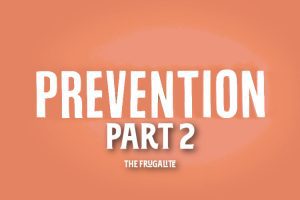(Psst: The FTC wants me to remind you that this website contains affiliate links. That means if you make a purchase from a link you click on, I might receive a small commission. This does not increase the price you’ll pay for that item nor does it decrease the awesomeness of the item. ~ Daisy)
By the author of the FREE online course Growing Self-Sufficiency: The Whole Picture
Yes, they do say that patience is a virtue, and virtues are nice to have. According to the Cambridge Dictionary, patience means “the ability to wait, or to continue doing something despite difficulties, or to suffer without complaining or becoming annoyed.” Notice the “ability” in this meaning to endure and also to not get angry. So, you are patient, feel peaceful, and don’t get angry in the face of difficulties…That’s nice, right? But the bottom line for Frugalites is the dollar line. I thought I’d share some stories from my own life about patience and money. Can patience actually save you some cash? I will let you, Dear Frugalite, be the judge of that for yourself.
Thrift Shop Patience
Like many things in life, if you want something yesterday, it’ll cost ya. Being in a rush is a common feature of our society, and capitalism has figured out a way to make us pay for it. Want your copy job faster? That’s more expensive. Faster delivery? That’s also usually more expensive.
In my own life, I have saved money by generally not being in a rush. I am content with “good enough” for many of my belongings, and then, as time permits, I spend time scouting out the local thrift shops for ideal belongings on my wish list. A recent example was sheets. I thought I had found a perfect set from our local thrift shop: like-new cream-colored fleece sheets of the right size. Sadly, when I got them home, I found out that someone had used the top sheet for a drop cloth!
Even trying a few different methods, I could not get the paint off. It was too much of a project for me, and the sheet was getting damaged. To be honest, it was trying my patience! So, I politely returned the offending sheet today. What did I see on the rack instead? A beautiful brand new set of Ralph Lauren 100% cotton sheets in my size in gold. Good thing I’m flexible on the colors! I have now upgraded my “good enough” sheets to a set of pure deluxe ones. The cost? Under $5!
Saving Up Patience
Some people might not be willing to live in a project cabin under construction. Although I have been living in my eco-cabin for a few years now, and it just passed the final inspection, there are still a number of things in the interior that are not finished, like all the drywall, the ceiling, etc.. I offer tours to people interested in all the sustainable features of the eco-cabin. Some come from quite a distance away. Most are quite understanding of what building on a budget looks like, but one woman seemed quite shocked when she stepped inside and said, “My! It’s still a work in progress!”
Was I offended? Heck no! I just saw it as a difference in preferences and values. I am on a budget, and I’m saving for what I can do, and then I do it. Could I borrow some money to finish it all? Heck ya! I’m sure my bank would loooooove that. I prefer not to pay interest, thank you very much. So, I’m planning to do a modest amount, buying washed stones to cover the exterior graded foundation perimeter this year. That’s it. My patience in this area will save me hundreds, if not thousands, in interest over the next several years.
Negotiation Patience
Our local internet provider does not have a great reputation for customer service. In fact, it can be incredibly frustrating to be punching in all kinds of numbers into their online phone system and waiting endlessly for someone to even answer the call. I try to consciously see this as a test of my patience. I know that losing my temper might feel justified, but it will not help my position with the company.

Learning Curve Patience
I began sprouting seeds in kindergarten when I planted bean seeds in a Styrofoam cup. At home, I watched my parents sprouting all kinds of seeds, including orange and lemon seeds in damp paper towels (my dad), and avocado seeds in the cupboards (my mother). We had a large garden throughout my childhood, which I helped harvest and tend.
When I first began to sprout my own seeds for my garden as an adult, it didn’t go perfectly. You see, I used to think of watering plants as love. I would overwater everything! My first set of seedlings over a decade ago were lovingly overwatered, did well for a short time, and then almost all died from damping-off. At the time, it was a tragedy of epic proportions.
However, I didn’t let it deter me from trying again. Now, over a decade later, I probably know around a hundred times or more about seedlings and their care. I accepted my learning curve with patience. What is my harvest, you might ask? I have a garden of home-started seeds, which has saved me a lot of money over the years. I’m glad I didn’t let my early challenges deter me from a rewarding project. If you’re interested in learning more about how I handle the ups and downs of seed starting and gardening, you might enjoy my blog post here.
DIY Patience
I know a few people who have built homes out in my rural area. All of them are men, and all of them were contractors in at least one trade, whether a plumber or a framer. Not me! I started building my eco-cabin as a woman at age 50, with no prior experience. As you can imagine, there were many times during the build when I faced difficult challenges.
One summer, I needed to attach wood planks to the exterior of the eco-cabin (strapping) for the steel siding. On my first attempt with my first board, I was unable to get my 5-inch screw to locate even one interior framing member. (Non-construction translation: I had no idea how to find the board I needed to screw into!) Fast forward to the end of the summer, and literally a thousand screws later, I was strapping like a pro. Although there were many trying moments, I used my patience to get through the DIY difficulties. I now have the satisfaction of gaining many new skills. Certainly, doing all of this myself saved me a ton of cash and is ultimately what allowed me to build at all.
Patience is a $$$?
In my own life, I have been able to see many instances where patience has saved me money. What about you? Could you see yourself trying any of the patience-related tips offered here? Do you have your own example of money-saving patience that you can share with us? Please tell us in the comments below.
About Colette
Colette is passionate about sharing her knowledge of thrifty living and self-sufficiency. She has developed her skills in self-reliance living in the suburbs, the city, and more recently, on her own Half-Acre Homestead. Colette lived five years completely off-grid and without running water in an eight by 24 foot tiny home while designing and building her own 18 by 24-foot eco-cabin. Her website, Half Acre Homestead is attracting followers from around the world who want to become more self-sufficient. Colette invites you to stop by the Homestead and check out all of the great resources including the practical How To Guides, A Tiny Home Resource Center and her organic gardening stories on her blog. She shares her wholistic model (body/mind/spirit) for achieving self-sufficiency in her Free Course, “Growing Self-Sufficiency: The Whole Picture.” Stop by the Homestead today to register free of charge!











9 thoughts on “Can Having Patience Save You Cash???”
I grew up on a farm where the workshop was not wired for AC power. The result was that I had to learn to use the many manual woodworking tools by muscle power. When 7th grade woodworking class came along (they still taught useful things back then) it was a grand eye-opener where I made a few things for my Mom that she kept and used for the rest of her life.
Many years later after I was through with the military and then grad school I stumbled across an ad in a Houston newspaper for a private estate sale about which I couldn’t resist a lookover. The grand discovery was a late 1940s cast iron multi-function woodworking tool called a Shopsmith. It had been the most widely sold combo tool of its kind for home craftsmen in America in the late 1940s and early 1950s. It was a combination table saw, wood lathe, drill press, rotary sander, and jrouter. A number of accessories with different features could be added. Years later I met a former Montgomery Wards salesman for that machine who told me that one like I had he had used to help build 7 houses.
That one machine was the beginning of a life-long collection of related accessories and later Shopsmith models — all acquired on a used basis from private individuals — saving a great deal of money.
–Lewis
Shopsmiths were sold thru the 1970s too. They handled pine well, hardwoods not so much.
Impulse anything is not good. Inability to determine want versus need is not good. Measure twice and cut once as the saying goes.
Most have more time than money which makes patience a bit easier.
Hi Selena, You are so right about the importance of determining want vs. need. While it seems like such a basic skill, it often feels like all of society is trying to convince us that our wants are actually our NEEDS! It’s too bad the schools aren’t teaching stuff like that. Thanks so much for your comment!
Shopsmiths have always attracted a certain number of detractors. Some were users attempting projects the earliest machines were not designed to handle. The earliest Shopsmiths came with a 1/2hp motor while a 3/4hp motor was an option. Later when the Mark V models were introduced in the early 1950s 3/4ph motors were the default even though increased power motors became available. Those later models also had the ability to accept some extra drop-in accessories, like a bandsaw for example, So I later acquired one of those models as well. The point is that one needs to know how to choose the right equipment to do specific work … instead of trashing both the equipment and the acquirer.
I had considerable mechanical experience when I saw that estate sale ad. I had spent one undergrad summer learning how to machine out aircraft and missile parts.Then I spent four years as a USAF aircraft maintenance officer. During part of that time I was in charge of a shop with machinists, sheet metal people, paint shop workers, Xray inspectors, etc. So I was experienced at working with machinery far more complex than the early Shopsmiths. Trashing a person who makes a quick acquisition without knowledge of his abilities to evaluate such a deal is not useful.
In those years I worked for an oil tool company where I had to research and create an operations manual for their purchasing department that had an annual budget of about $100 million dollars. So I had considerable knowledge of the purchasing process that included evaluating manufacturers. the quality of products, and the dependability of manufacturer support services for years thereafter. My decision to personally buy that early Shopsmith for home use was a tiny microscopic version of what I knew how to do on an industrial scale.
Even though the early Shopsmith manufacturing operation changed ownership several times … it is still very much in business today
Finally it is worth remembering that the deceased owner of that early Shopsmith had kept it as long as he lived. If he had ever been disappointed about it he could have sold it off easily a long time before. I intend to do likewise.
–Lewis
Hi Lewis, Your background and story about the Shopsmith is fascinating. What an interesting professional life you have had! Your patience to locate one at an estate sale and recognize its value: priceless. Thanks so much for taking the time to share so many of the details that were behind your choice of that machine…that you are still enjoying today!
Both my husband and I had allergies that made carpeting an unhealthy choice. The house we bought new had carpet everywhere but bathrooms and kitchen. We suffered through several years before he announced that we needed tile or hardwood. We compared prices which were out of our reach. However ceramic tile, grout, and the other supplies were relatively cheap. Over a period of two years he slowly and carefully laid tile throughout the house. The house was built on a concrete slab so we just pulled up the carpet and lived with bare concrete as he laid tile as he had time. The result when he finished was beautiful and admired by everyone who saw it. It may have been inconvenient during the process but we got a beautiful floor for a very low price.
Hi Mary, What a great story. This is particularly relevant to me. I’ve been living with a bare concrete floor for years now (ah, the dust!) with no budget for this in sight. After comparing many options, I have come to the same conclusion: tile is the way to go! Like the two of you, I will do one small area at a time. I am inspired by your own story to persevere with my floor. I know the final product will be wonderful. I’m just at the start of the journey which is a bit daunting for me. Thanks for the boost to get moving on it! Much appreciated!
I love your example of saving money through maintaining patience when calling customer service! Having done my share of tech support/customer support over the years, I can tell you from the other side that the employee is going to want to help you as much as they can if you keep your cool. Contrary to what many people think, getting angry almost never achieves better results, so I appreciate your approach.
I also agree with having patience while learning a task, I need to remind myself of that sometimes too. Sometimes you just need time and experience, or maybe patience to slog through a lot of irrelevant information to find that nugget you need. Nice article!
Hi Redbranch, What a great addition to the article to have your view of “the other side” of the phone. if a picture is worth a thousand words, the perspective of a real person who has answered those calls is likely worth TWO thousand. Much appreciated!